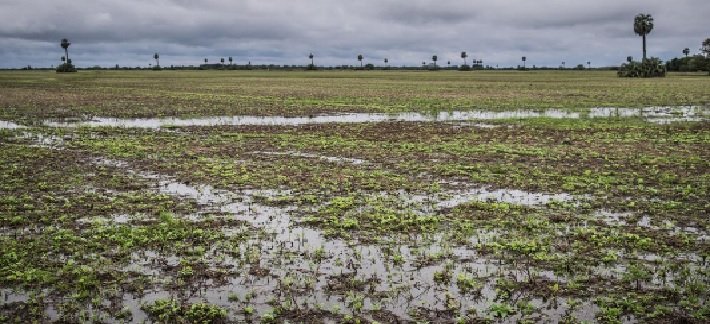Monsoon rains benefit Kharif crops in some places and harm them in others
09-Jul-2025 10:59 AM

New Delhi. Although the southwest monsoon reactivated in the second half of June and brought heavy rainfall to many parts of the country, its intensity and spread increased significantly in July.
As a result, several regions received far more rainfall than the seasonal average, and the rain continues. Rivers, streams, and agricultural fields are overflowing, causing disruption in the sowing and growth of Kharif crops.
On the other hand, areas facing rain deficiency are struggling—not only has the pace of sowing slowed down, but poor seed germination and crop drying have forced many farmers to consider resowing.
In regions where the monsoon has been balanced, sowing activity is progressing swiftly, and farmers are showing great enthusiasm for cultivation.
The monsoon has now covered the entire country, bringing down temperatures with widespread heavy rains—from Tamil Nadu and Kerala in the south to Himachal Pradesh in the north, and from Bengal and Assam in the east to Gujarat and Rajasthan in the west.
However, several parts of the southern states, including Maharashtra, Karnataka, Telangana, and Andhra Pradesh, are still experiencing rainfall deficiency.
In contrast, states in central and northern India—such as Uttar Pradesh, Madhya Pradesh, Punjab, Haryana, Bihar, Odisha, and Jharkhand—have received excellent rainfall.
July and August are typically the peak monsoon months and are crucial for the sowing of Kharif crops. According to government data, as of July 4, the total sown area under Kharif crops has increased to 437.45 lakh hectares, up 11 percent from 393.75 lakh hectares during the same period last year. This represents about 40 percent of the normal average Kharif area of 1,097 lakh hectares.
Remarkably, in just the past week, Kharif sowing has surged by 180 lakh hectares, with oilseeds contributing the most—around 60 lakh hectares. Paddy and other crops have also seen significant gains.
However, in some areas, extremely heavy rains have caused flooding in fields, leading to crop damage and concerns among farmers.
